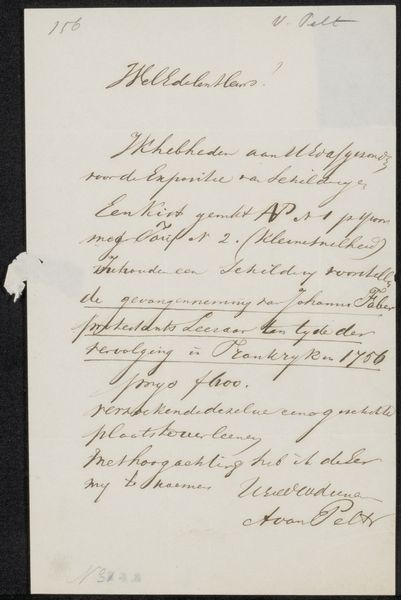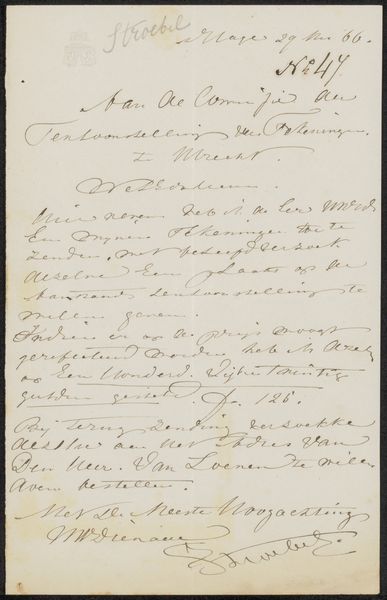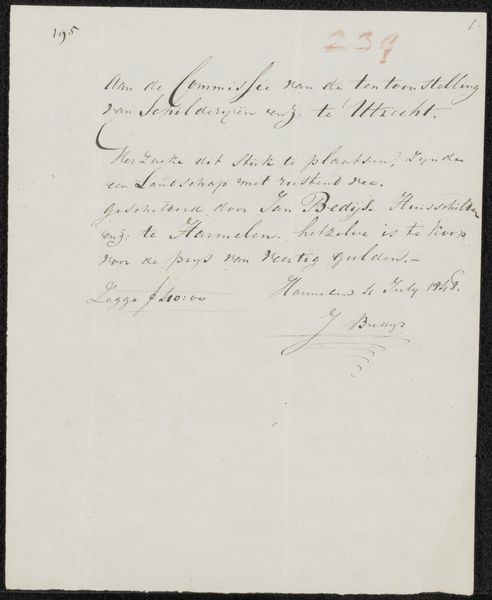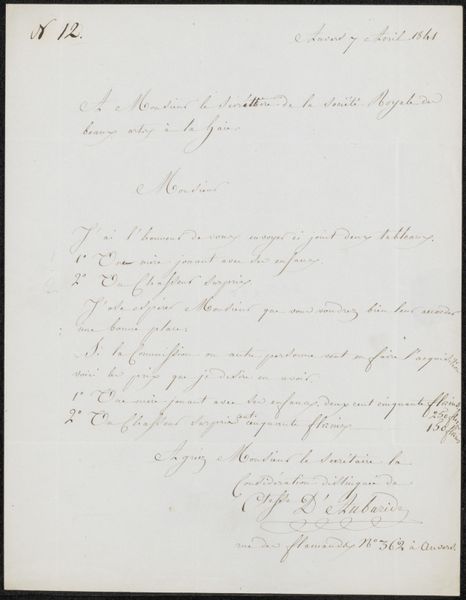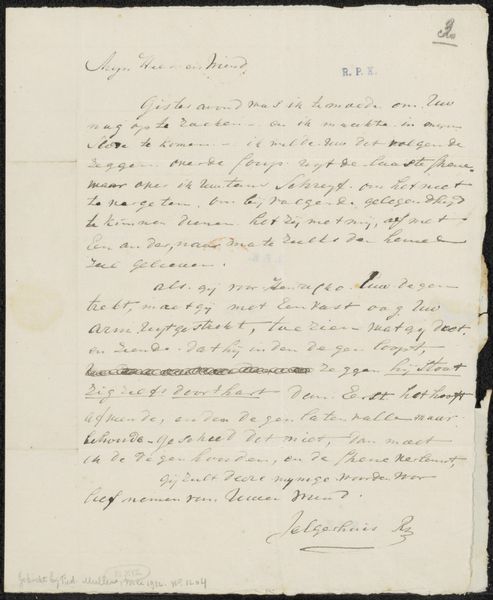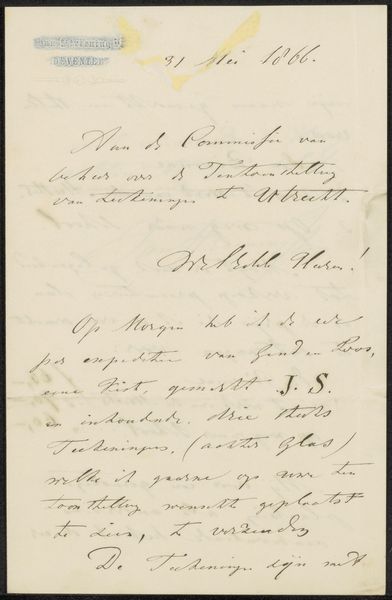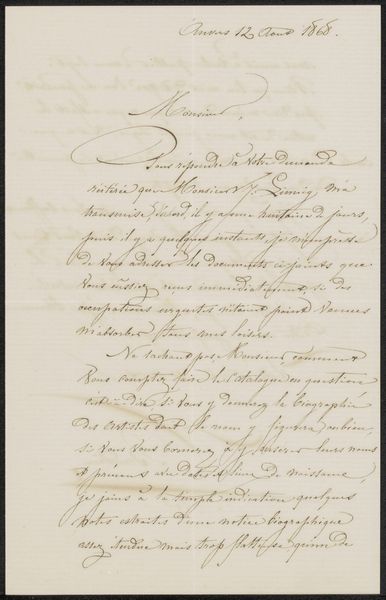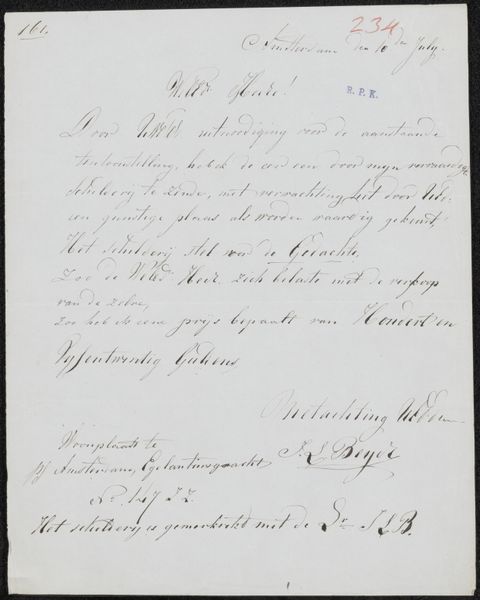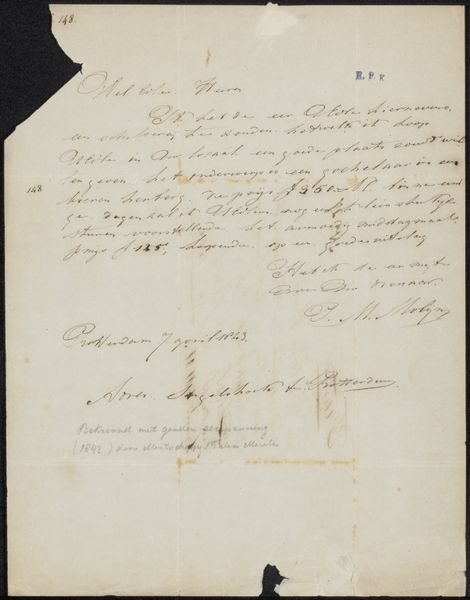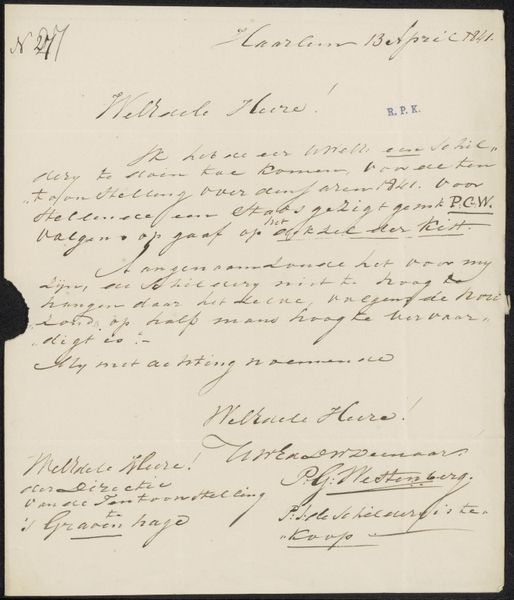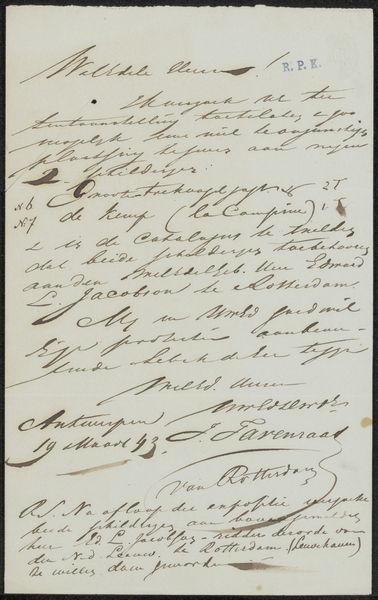
drawing, paper, ink
#
drawing
#
paper
#
ink
#
calligraphy
Copyright: Rijks Museum: Open Domain
Editor: This drawing, "Brief aan Pieter Verloren van Themaat," is attributed to Hendrik Albert van Trigt, possibly from 1866. It's ink on paper, and I’m immediately struck by the delicate calligraphy. What stories do you think this script might tell? Curator: Ah, yes. Beyond the literal message, the script itself is a powerful carrier of cultural memory. Calligraphy was, for centuries, not just a method of communication, but a form of art. The flourishes, the pressure, the specific letterforms—they all speak to a time when handwriting conveyed social standing, education, even personality. Notice the deliberate slant of the letters, and the contrasting thickness of each stroke. Editor: It almost feels performative, doesn't it? Like each word is carefully presented. Curator: Precisely! And think about what this letter *isn't*. It's not a mass-produced document; it's a unique, handcrafted object meant for a specific person. This uniqueness imbues it with intimacy, revealing much about the relationship between the writer and recipient. What emotions or social dynamics does it suggest to you? Editor: Maybe a formal acquaintance? The handwriting is so careful, it suggests a degree of respect, but it doesn't feel particularly warm. Curator: I see that. Perhaps a professional relationship, where aesthetics and precision mattered as much as the information conveyed. The paper and ink, though simple, also carry symbolic weight. Paper was precious, ink took skill to create. This wasn't a fleeting thought, but a considered message. Editor: It’s amazing to think of all the layers of meaning packed into what seems, at first glance, just a letter. Curator: Indeed. A humble letter can act as a time capsule, whispering secrets of a bygone era if we only know how to listen.
Comments
No comments
Be the first to comment and join the conversation on the ultimate creative platform.
